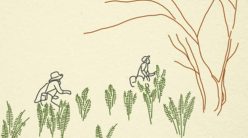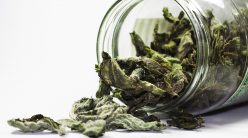There are so many fantastic wild edibles to forage in May!
Many of the best wild foods can only be found this time of year, such as wild asparagus and morels. Greens are still mild and delicious, and more and more favorites are starting to show themselves.
Here are 31 wild edible foods to look for in May, along with information on how to find them and use them. Note that wild foods emerge at different times depending on location, so you may find some of these early in the month in one part of the country and not till the end of the month in another region. Connect with other foragers in your region to see when your favorite wild edibles are being spotted in your area.
- Asparagus: Wild asparagus is one of the best foods to forage for, and this is pretty much the only month you can get it. Check the asparagus tags here on our site for some of our best tips to find asparagus.
- Cattail shoots: Cattails were a staple in the diet of many Native American tribes and were one of the first wild foods that our family foraged. Our kids were hooked on the wet work of pulling up the young shoots, and we were all hooked on the taste. We simmer them in butter and salt with wild asparagus. I recommend reading Eulle Gibbon’s Stalking the Wild Asparagus (affiliate link) and following his advice for preparing cattails.
- Morel mushrooms: There’s a reason these are searched for with a frenzy that’s practically unheard of for any other wild plant. Morels are quite simply delicious and worth the hunt. Our favorite ways to eat them are battered and fried, or just sauteed in butter with some garlic.
- Spruce tips: We’re just getting into spruce tip season in much of the country, and it’s the perfect time to gather these wild edibles that taste like a cross between citrus and Christmas.
- Wild Violets: Both the leaves and flowers are edible and wonderful for cooking this time of year. Use the flowers for edible garnishes, syrups or liqueurs. The leaves are great tossed in salads.
- Nettles: Nettles are many foragers and herbalists favorite wild plants, for good reason. Despite their sting, they are delicious when cooked and even work well in smoothies. Not only that, but they are one of the most healthful wild foods, helping treat everything from seasonal allergies to anemia to arthritis and more.
- Sheep Sorrel: This tart, tender green is great in salads or cooked and used in dishes like spinach. Some also enjoy it added to mashed potatoes with green onions.
- Ramps: This is the last of prime season for gathering much sought-after ramps. Check out our ramp articles by clicking on ramps in the categories.
- Dandelions: This is the time of year to use the greens in salad, before they get too large or flower and turn more bitter. Also gather the flowers for dandelion syrup or batter and fry them.
- Lamb’s Quarters: This abundant edible weed is a favorite of many foragers. Like most greens, it is best this time of year before it gets large and the weather gets hot. Use it in salads or for wild pesto.
- Pheasant back mushrooms: Many foragers report that these mushrooms are too tough to forage, but they’re delicious if they’re foraged at the right time and prepared properly. Find out how to recognize good pheasant backs (also known as dryad’s saddles or hawks’s wings) and get lots of delicious recipes to use them here.
- Curly dock: Like dandelion leaves, curly dock is best in spring and fall before the plant produces flowers. Also like dandelions, boiling it for a few minutes and changing the boiling water will take away some of its bitter flavor (but also some of its nutrition).
- Chicory: The young leaves can be used for salads this time of year and you can pickle the flower buds. Later, when the flowers appear, they can be added to salads. Find out more about ways to use chicory and medicinal uses here.
- Chickweed: This edible weed is a wonderful source of calcium and vitamin C and is best served raw in dishes such as salads, sandwiches, juices and pesto. It is best harvested in spring before it flowers. Harvest the tips (the rest is rather stringy). It wilts quickly, so eat it as soon as possible after picking.
- Plantain: While this common lawn weed is edible, it’s more commonly gathered for skin tonics and for medicinal uses. It’s abundant now and can be dried for use year-round. Teach kids to recognize it as an easy remedy for bee and wasp stings, insect bites and such. To use, simply chew a leaf slightly and apply as a poultice to the affected area.
- Jewelweed: This is another wild edible that is more commonly used for skin afflictions. It makes a wonderful poison ivy remedy when combined with plantain. Susun Weed advises making a soup with the whole plant for amazing health benefits, while others say it’s high in selenium and cooking water should be discarded. Do your own research and decide for yourself, but there are many wonderful ways to use this abundant plant no matter which way you go.
- Queen Anne’s Lace: This healthful wild edible is starting to bloom this month but if you are new to foraging then be sure to fully research how to tell the difference between Queen Anne’s lace and look-alike poison hemlock. You can easily learn the differences between Queen Anne’s lace, poison hemlock and yarrow in this video, though.
- Fiddlehead Ferns: This time of year is the only time to snatch up these well-loved delicacies, but be sure you get the right variety of ferns (ostrich ferns) and boil them for a few minutes before sauteing. Read up more on what to look for and how to treat them from the University of Maine, here.
- Garlic Mustard: You’re doing nature a favor by harvesting all you like of this invasive weed that also happens to be incredibly healthy and nutritious Garlic Mustard is good for your heart, weight and cholesterol and it may help prevent cancer, among many other health benefits. The flowers, leaves, roots and seeds are all edible but the leaves taste best this time of year before it gets too hot and they get bitter. Avoid bitter leaves by collecting garlic mustard in shady spots instead of full sun, and more nourished soil. The leaves taste of garlic, not surprisingly. The roots can be collected now, too, before flower stalks are present. Garlic mustard roots taste very spicy, somewhat like horseradish.
- Burdock: Both the roots and the stalks of burdock are enjoyed by foragers. Learn how to use the stalks from Mother Earth News here, and much more (including medicinal uses) from Sacred Earth here. You can also find a variety of great recipes at Punk Domestics here.
- Wood Sorrel: This tender, low-growing plant can be easily confused with clover (which is also edible and healthful). Its tart flavor is great in soups and salads. Note that Wood Sorrel contains oxalic acid which can be harmful to those with kidney problems.
- Catnip: Yes, you can forage for treats for your cat, too! Catnip, a member of the mint family, is a common weed that many cats find irresistible. It can also be used for human consumption, though. Young leaves can be added to salads or smoothies (keep in mind that as mints, they pack a punch). Older leaves can be used for seasoning or can be used for calming teas. Another fantastic property of catnip is its ability to repel mosquitoes. Crush the leaves and rub them to keep mosquitoes away or use them to make your own mosquito repellents. Learn more about catnip here.
- Oyster Mushrooms: Many foragers think of oyster mushrooms as a fall mushroom, but it’s been recently discovered that there are two types of very closely related to mushrooms that were previously both called oyster mushrooms — one of which is most commonly found in fall and one that is found this time of year. Mushroom Collecting explains here and also shares, “Pleurotus populinus is mostly found in late May and early June growing on dead poplar (aspen) exclusively. I find them on both quaking aspen and eastern cottonwood.”
- Miner’s lettuce: This tasty wild green got its name because it helped prevent miners from getting scurvy. It’s packed with vitamin C-packed green is mild and succulent. Miner’s lettuce is best enjoyed fresh, in salads and sandwiches.
- Mallow: This mild green has a mucilaginous quality a bit like okra, so it can be used similarly to thicken stews. Eat the tender leaves raw in salads and smoothies or serve it steamed, boiled or sauteed like spinach. The leaves have also traditionally been used in soothing teas for dry sore throats and coughs. The flowers are also edible and make nice garnishes for salads and other dishes.
- Pigweed: This invasive weed with a terrible name is the bane of farmers everywhere and not the most sought after edible plant, but it is healthy and edible — especially in spring when still relatively small. Pigweed is in the amaranth family and was used as a highly nutritious food source by Native Americans of many tribes. You can use the leaves as you would spinach. Later in the season the seeds can be used. Learn more about pigweed here and here.
- Smilax: This is another invasive weed that’s tasty and nutritious. Also known as cat briar or greenbriar, you can use the tender ends of the vines like green beans or asparagus. Native Americans also used the roots to make a root beer. Learn more about using and identifying smilax here.
- Winecap Mushrooms: These prolific mushrooms thrive in cool, wet weather, and fruit in both spring and fall. They are an ideal accompaniment to the ramps that are also out this month, and The 3 Foragers has lots of good information about them both here.
- Waterleaf: The distinctly spotted leaves of this wild edible give it the appearance that it is stained by water drops. It grows throughout most of the United States and Canada, and loves somewhat damp places and dappled shade. Virginia waterleaf is one of the most prolific varieties, and it flourishes far past Virginia into areas such as Minnesota. Known also as Indian Salad, the leaves taste a bit like parsley and are good in salads this time of year or in soups as a potherb. The leaves are also good fried in fat or oil when they are tougher.
- Cow Parsnip Greens: Laurie Constantino calls cow parsnip greens “a highly desireable wild edible” when prepared correctly. She advises to always wear gloves and long sleeves when harvesting it, and has lots of great information here.
- Black Locust Flowers: Look for flowering black locust trees for about a week in May, and gather the flowers to use in a variety of ways. The 3 Foragers has more information here. They write, “The best way to eat the blossoms is raw from the tree. Use them in a salad, or stir them into hot oatmeal. We remove the flowers from the cluster stem and add them to pancakes. Robert makes a sweet drink with the flowers steeped in water, honey, and lemon juice. This year, we are trying a peasant wine made with the blossoms.”
Remember, if you’re new to foraging, head out with an experienced forager your first few times or stick to plants that you already know or can easily identify. There are wonderful books that can help you ID wild edibles, and there are also dozens of Facebook groups filled with foragers who are happy to help ID photos of plants you’re unsure about (see 25 Fantastic foraging groups and pages on Facebook for some of the best).
Happy foraging!







